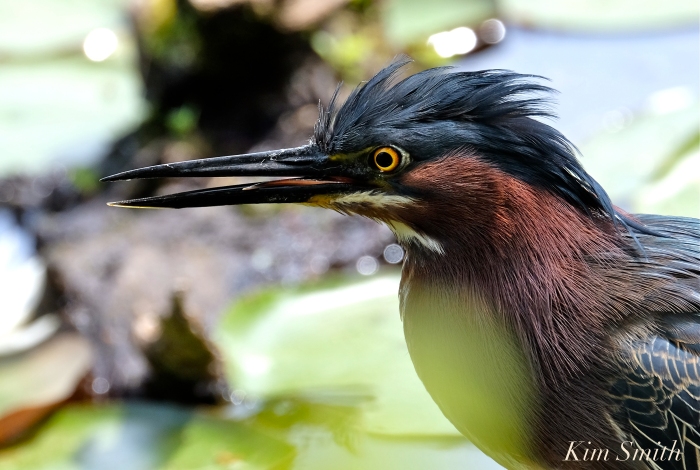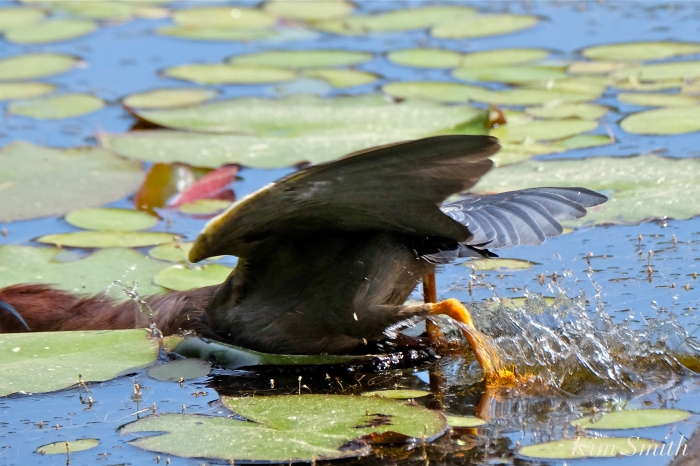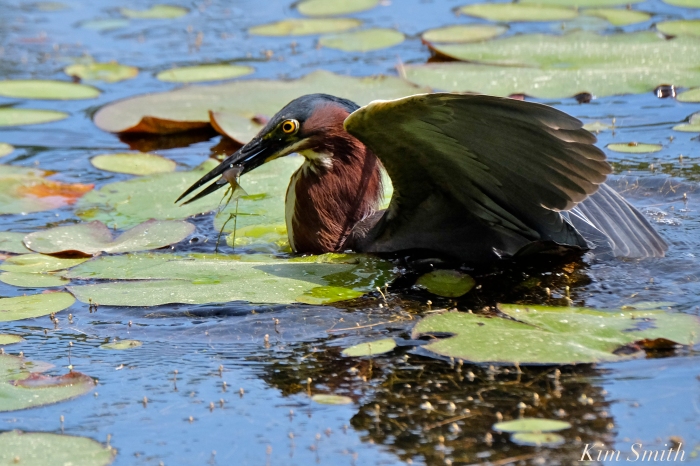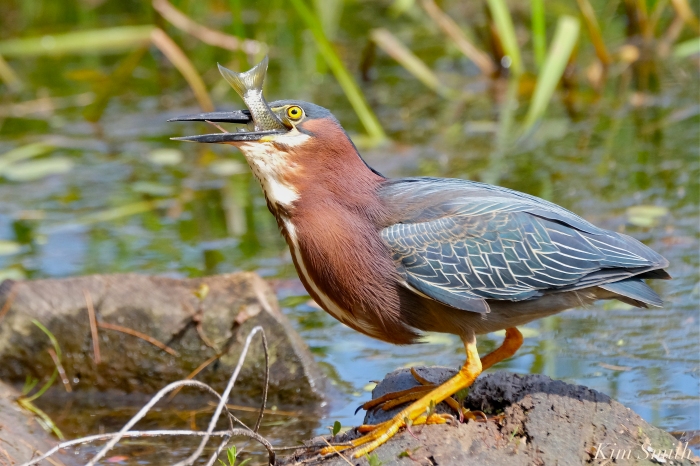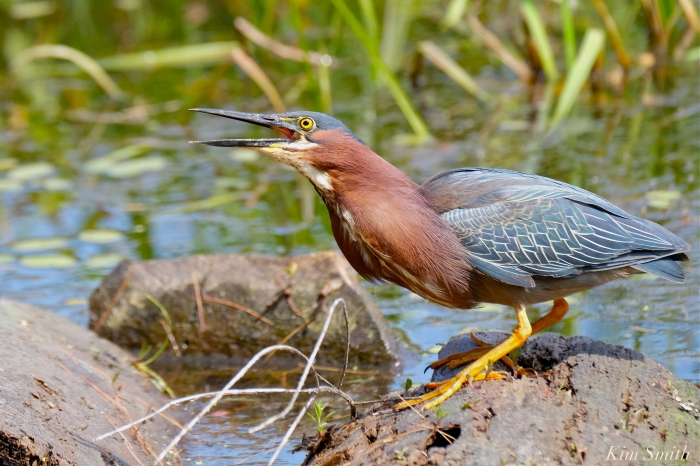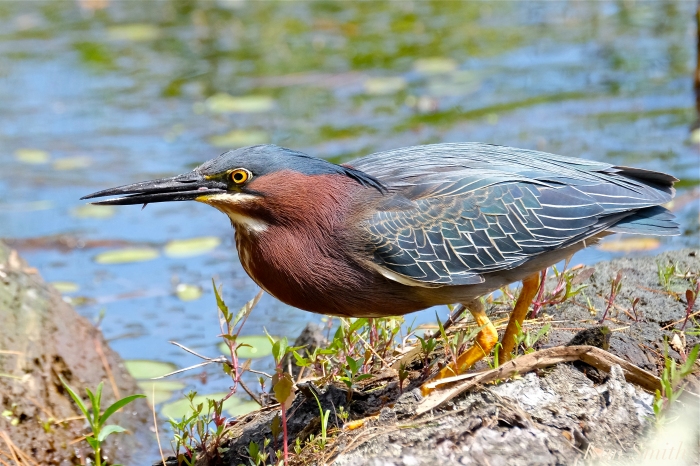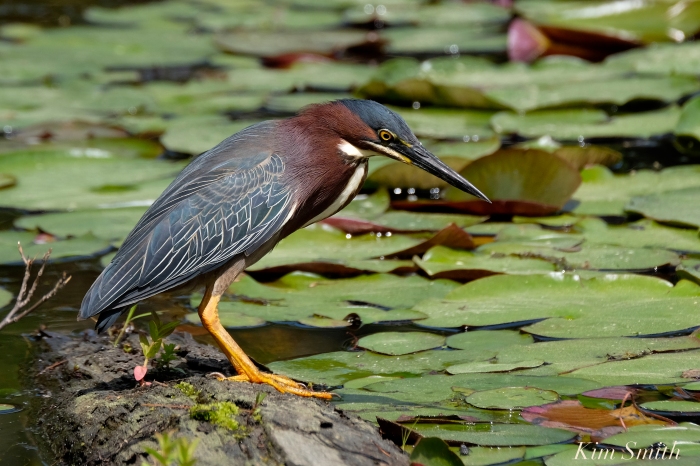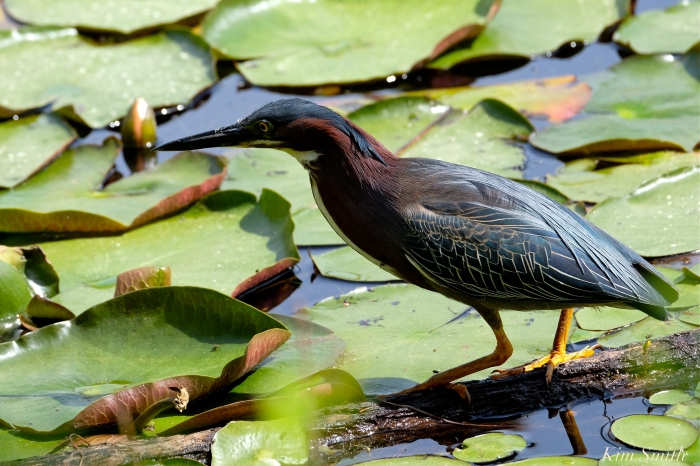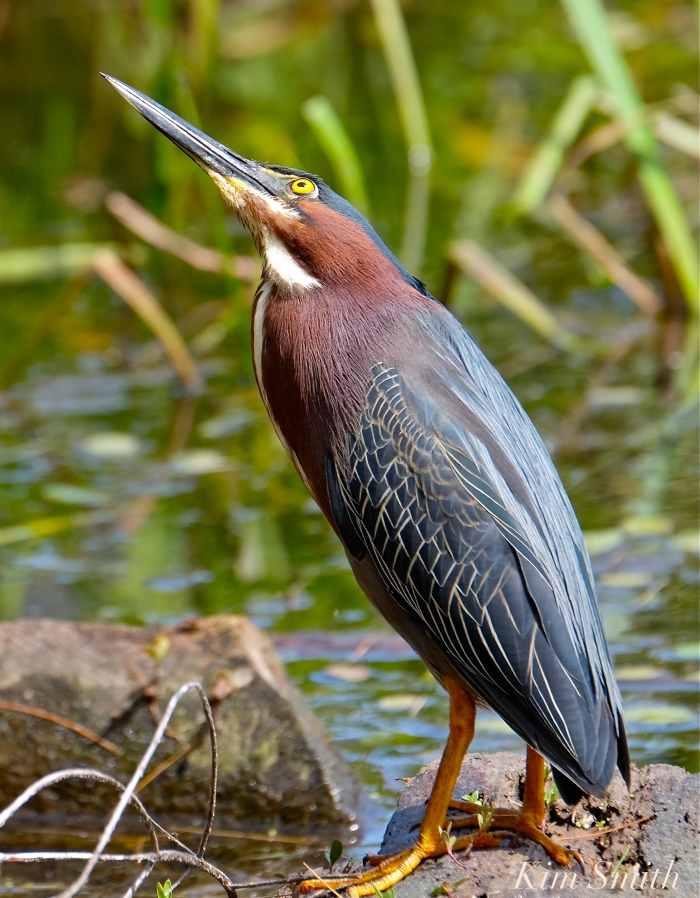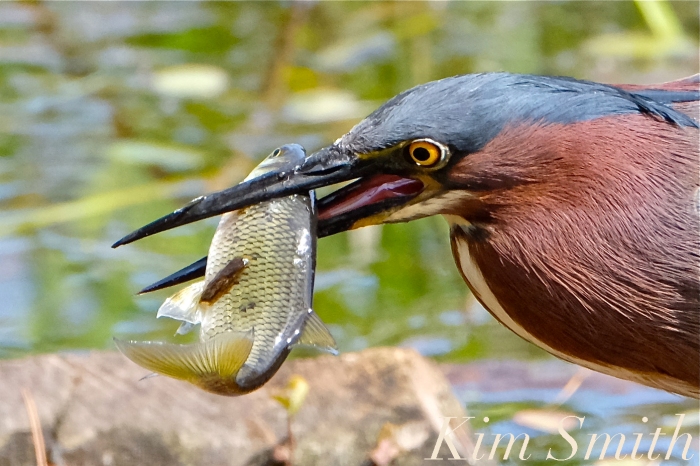 You never know what gift of beauty you will encounter in the “wild woods” of Cape Ann. I never leave home without my cameras and today was a perfect example why. Traveling the scenic way between jobs, I passed a stunning little Green Heron whose rich teal and maroon colored feathers were shimmering in the mid morning sun. I had to pull over, thinking I would at best take a few snapshots because in previous encounters, Green Herons usually fly away quickly. The bird tolerated me for some time as I watched him do a slow, stealthy dance around the pond’s edge, catching small minnows as he went. Imagine how delightful to then see him catch a fish as large as his dagger-like bill!!
You never know what gift of beauty you will encounter in the “wild woods” of Cape Ann. I never leave home without my cameras and today was a perfect example why. Traveling the scenic way between jobs, I passed a stunning little Green Heron whose rich teal and maroon colored feathers were shimmering in the mid morning sun. I had to pull over, thinking I would at best take a few snapshots because in previous encounters, Green Herons usually fly away quickly. The bird tolerated me for some time as I watched him do a slow, stealthy dance around the pond’s edge, catching small minnows as he went. Imagine how delightful to then see him catch a fish as large as his dagger-like bill!!
Green Herons eat a wide variety of fish and small creatures including minnows, sunfish, catfish, pickerel, carp, perch, gobies, shad, silverside, eels, goldfish, insects, spiders, crustaceans, snails, amphibians, reptiles, and rodents.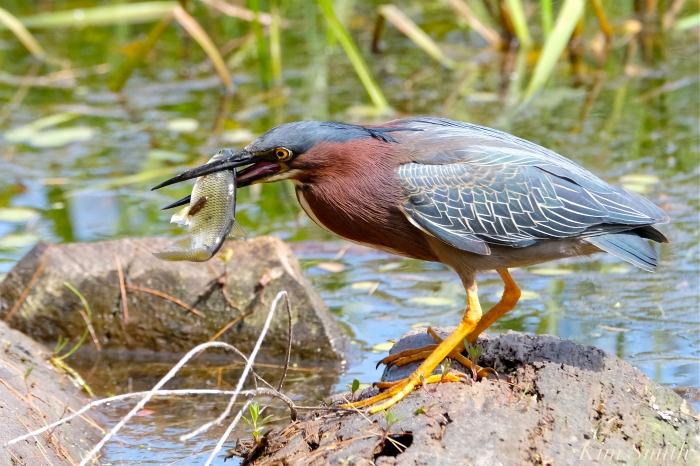
One large fish devoured in one large gulp!
The Green Heron is found throughout the US but is a species in decline in most regions, except California, where the bird appears to be increasing. Green Herons breed in Massachusetts coastal and inland wetlands.